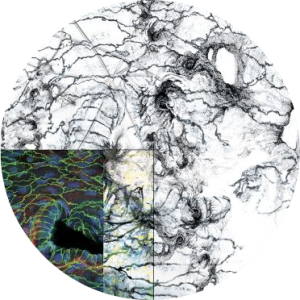

TEAM LEADER : Ivana Zlatanova
Mail : ivana.zlatanova@inserm.fr
PHONE :+33 1 53 98 80 41
LOCATION : Lab 173
DOCTORAL SCHOOL : Bio-Sorbonne Paris Cité, Department of Cellular and Molecular Biology, Physiology and Pathology

Myocardial infarction (MI) is a life-threatening ischemic heart disease (IHD) characterized by the permanent loss of cardiomyocytes (CM). As a result, the heart substitutes damaged or failing cardiac muscle with fibrous scar tissue, potentially causing heart failure or death. Unlike mammals, which exhibit a low cardiomyocyte turnover rate of approximately 0.5% and limited regenerative capacity, non-mammalian vertebrates, such as zebrafish (Danio rerio) carry a highly regenerative potential and can regenerate large portions of the heart, making the zebrafish a valuable model to decipher the enigma of why and how tissues regenerate. Our research focus on understand gene expression and regulatory mechanisms in the regenerating heart to uncover the principal of endogenous regeneration. Recent advances using genomic tools revealed that enhancers, small DNA sequences, can drive gene expression in regenerating tissues. Our research group aims to explore the mechanisms by which enhancers regulate cardiac regeneration in zebrafish, with the ultimate goal of applying this knowledge to mammalian systems. Using multidisciplinary experimental strategy based on cutting-edge genomic and molecular approaches, we aim to decipher the genetic programs governing cardiac regeneration with high spatiotemporal resolution. By advancing our understanding of the role of enhancers in natural regeneration, we aim to develop innovative therapeutic modalities that leverage these mechanisms to repair damaged hearts and improve outcomes for patients with ischemic heart disease
Topic 1: Decoding cell-type specific chromatin landscape to elucidate heart regeneration
Using multi-omics methods, we aim to identify functionally active tissue-specific enhancers in response to cardiac injury in zebrafish.
Topic 2: Characterization of cardiomyocyte proliferation in the mouse heart: Insights into cardiac regeneration
Using in vivo models to track cardiomyocytes cycle dynamics, we aim to account for CMs that successfully dived during development and post-myocardial injury.
Topic 3: Characterization of an endothelial enhancer as an angiogenic marker in cancer development
Using transgenic animal models, we aim to track metastatic cancer progression and test anti-angiogenic molecules to prevent metastasis development in zebrafish and mice.